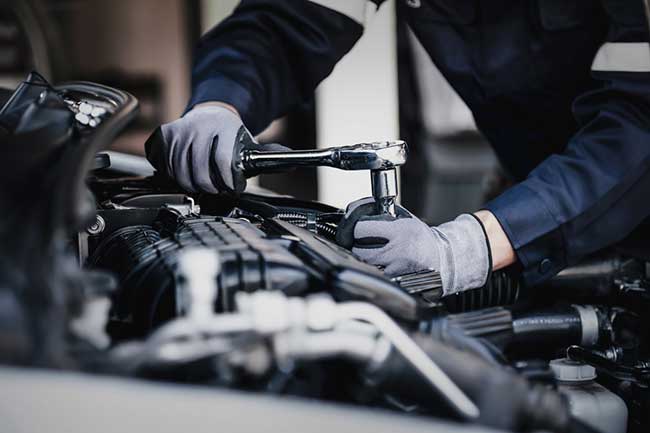All Categories
Featured
Tire rotations are among the simplest yet most effective maintenance jobs to ensure your automobile runs smoothly and safely. This regular service redistributes tire wear, providing many benefits for your auto's efficiency, safety, and your budget.
What Does Tire Turning Involve?
Tire rotation is the procedure of occasionally transforming the position of each tire on your lorry. For example, front tires may be exchanged with rear ones, or tires may be relocated diagonally. The particular pattern depends upon factors like your vehicle's drivetrain (front-wheel, rear-wheel, or all-wheel drive) and the kind of tires you have.
![]()
Why Tire Rotations Are Crucial
Advertises Even Step Wear. Various tires birth different amounts of weight and anxiety depending on their setting. Front tires usually put on much faster because they handle steering and stopping. Normal rotations cancel the wear, making sure all 4 tires have similar step depths.
Prolongs Tire Lifespan. Uneven wear brings about premature tire substitutes. Revolving your tires can expand their life-span, saving you cash over time.
Improves Automobile Efficiency. Balanced tires boost stability, dealing with, and traction. Whether you're cornering, braking, or driving on slippery roadways, evenly used tires make sure a smoother and much safer driving experience.
![]()
Boosts Fuel Effectiveness. Tires with uneven tread wear can create more moving resistance, which makes your engine work more difficult and eats much more gas. Normal turnings assist maintain ideal gas performance.
Guarantees Security. Worn tires can endanger braking range and control. By rotating your tires, you maintain also wear and minimize the danger of blowouts or skidding.
How Often Should You Turn Your Tires?
Specialists advise rotating your tires every 5,000 to 7,500 miles. A practical approach is to combine tire rotations with oil changes. Constantly consult your lorry's owner manual for particular guidelines.
Common Turning Patterns
Rotation patterns rely on your vehicle's drivetrain and tire kind:
Front-Wheel Drive (FWD): Front tires relocate to the back, and rear tires cross to the front.
Rear-Wheel Drive (RWD): Back tires relocate to the front, and front tires cross to the rear.
All-Wheel Drive (AWD): Tires follow an "X" pattern to ensure well balanced wear.
Directional Tires: These tires need to stay on the very same side of the vehicle and are exchanged front to rear.
Signs Your Tires Need Rotation
Irregular walk wear.
![]()
Lowered fuel effectiveness.
Resonances while driving, particularly at high speeds.
Problem handling the automobile in negative weather condition conditions.
Final Ideas
Tire rotations are an easy means to protect your investment and enhance your driving experience. By redistributing wear, you can extend the life of your tires, boost fuel effectiveness, and guarantee your security when driving. Schedule routine tire rotations with a trusted mechanic and make it a constant part of your vehicle's upkeep routine.
What Does Tire Turning Involve?
Tire rotation is the procedure of occasionally transforming the position of each tire on your lorry. For example, front tires may be exchanged with rear ones, or tires may be relocated diagonally. The particular pattern depends upon factors like your vehicle's drivetrain (front-wheel, rear-wheel, or all-wheel drive) and the kind of tires you have.

Why Tire Rotations Are Crucial
Advertises Even Step Wear. Various tires birth different amounts of weight and anxiety depending on their setting. Front tires usually put on much faster because they handle steering and stopping. Normal rotations cancel the wear, making sure all 4 tires have similar step depths.
Prolongs Tire Lifespan. Uneven wear brings about premature tire substitutes. Revolving your tires can expand their life-span, saving you cash over time.
Improves Automobile Efficiency. Balanced tires boost stability, dealing with, and traction. Whether you're cornering, braking, or driving on slippery roadways, evenly used tires make sure a smoother and much safer driving experience.

Boosts Fuel Effectiveness. Tires with uneven tread wear can create more moving resistance, which makes your engine work more difficult and eats much more gas. Normal turnings assist maintain ideal gas performance.
Guarantees Security. Worn tires can endanger braking range and control. By rotating your tires, you maintain also wear and minimize the danger of blowouts or skidding.
How Often Should You Turn Your Tires?
Specialists advise rotating your tires every 5,000 to 7,500 miles. A practical approach is to combine tire rotations with oil changes. Constantly consult your lorry's owner manual for particular guidelines.
Common Turning Patterns
Rotation patterns rely on your vehicle's drivetrain and tire kind:
Front-Wheel Drive (FWD): Front tires relocate to the back, and rear tires cross to the front.
Rear-Wheel Drive (RWD): Back tires relocate to the front, and front tires cross to the rear.
All-Wheel Drive (AWD): Tires follow an "X" pattern to ensure well balanced wear.
Directional Tires: These tires need to stay on the very same side of the vehicle and are exchanged front to rear.
Signs Your Tires Need Rotation
Irregular walk wear.

Lowered fuel effectiveness.
Resonances while driving, particularly at high speeds.
Problem handling the automobile in negative weather condition conditions.
Final Ideas
Tire rotations are an easy means to protect your investment and enhance your driving experience. By redistributing wear, you can extend the life of your tires, boost fuel effectiveness, and guarantee your security when driving. Schedule routine tire rotations with a trusted mechanic and make it a constant part of your vehicle's upkeep routine.
Latest Posts
Experience WyHy Federal Credit Union – Top Perks for Your Money Goals
Published May 28, 25
1 min read
Discover Your Partner at WyHy Reduces Your Costs on Financing and Accounts
Published May 23, 25
1 min read
Shield and Enhance Your Home with Weathercraft's Exterior siding Solutions
Published May 21, 25
1 min read
More
Latest Posts
Experience WyHy Federal Credit Union – Top Perks for Your Money Goals
Published May 28, 25
1 min read
Discover Your Partner at WyHy Reduces Your Costs on Financing and Accounts
Published May 23, 25
1 min read
Shield and Enhance Your Home with Weathercraft's Exterior siding Solutions
Published May 21, 25
1 min read